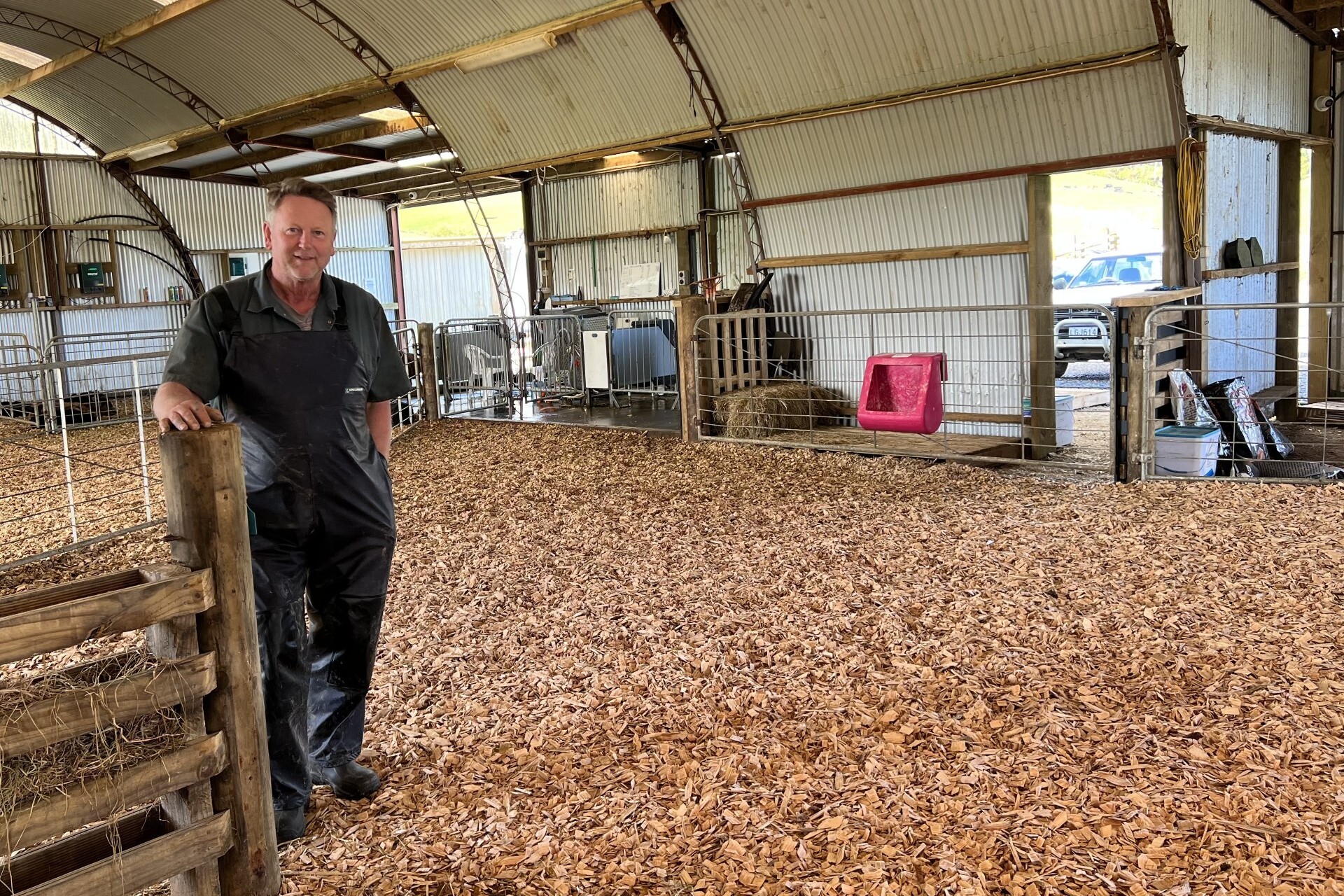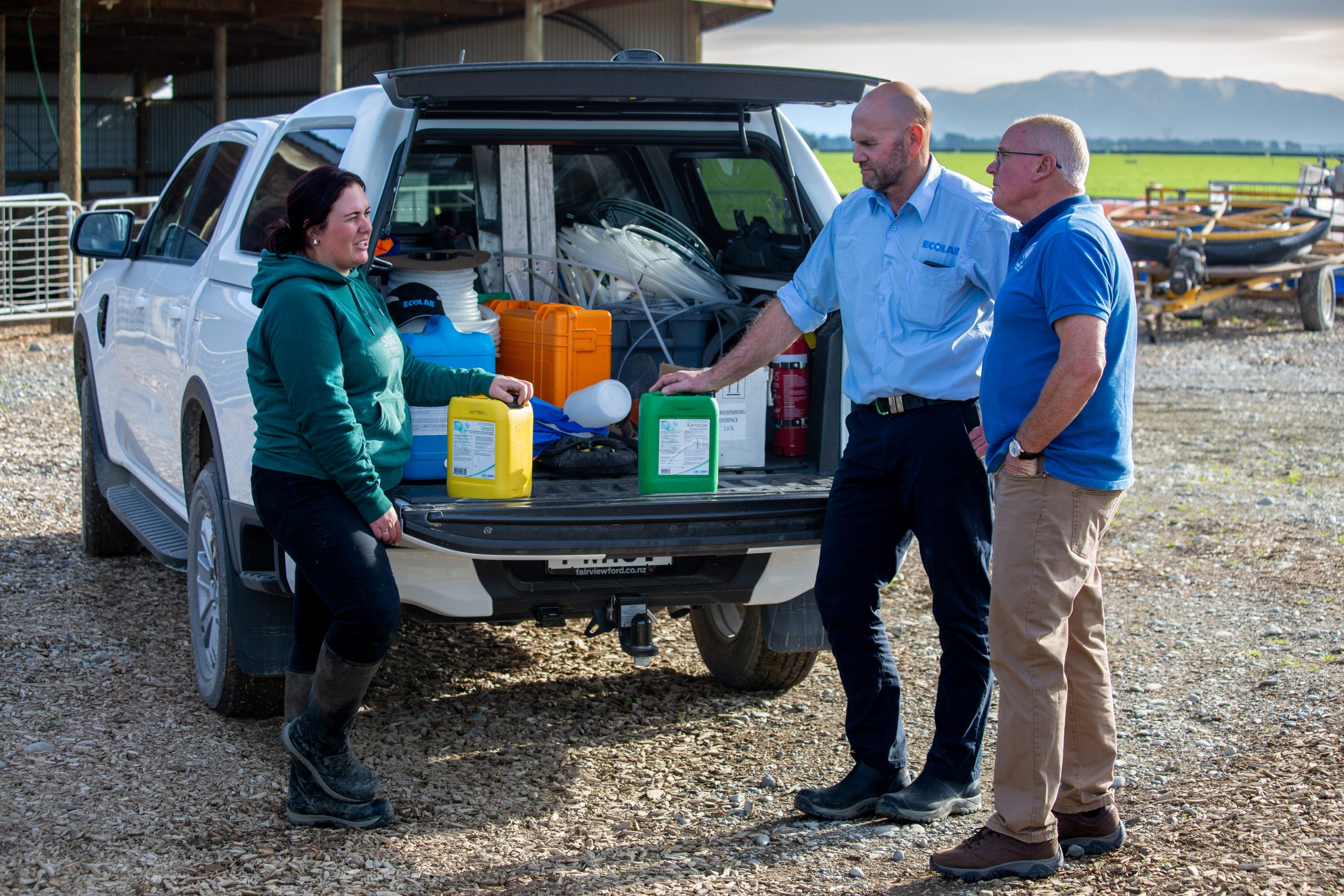Two adjacent farms in a rugged area provide the perfect locations for growing good stock as well as supplying honey and products made from it. Anne Hardie reports.
Four years ago, the government lease for Rainbow Station was available, and the adjoining Raglan Station was for sale, giving a combined area of 8500ha. After discussion with his family and bank, it was deemed too good an opportunity to pass by so Philip Cropp got the green light to go ahead. The Nelson Honey and Marketing owner already knew the land well from the beehives distributed around it.
Two years ago they expanded the farming operation by buying a 350ha farm in nearby Howard Valley. Last year they bought a 450ha predominantly flat farm just down the Wairau Valley called Argyle. The combined farms now run about 700 breeding cows and 7000 breeding ewes.
Rainbow is the main breeding unit for the farm business and it’s not the easiest to manage. It wanders along a skinny corridor stretching nearly 50km between the mountains, sharing the path with the pylons that carry power north. At the front of the corridor lies about 800ha of flat land about 560m above sea level that is ideal for cropping and supplements, with another 200ha of flat tussock on higher plateaus. From the flats, the station winds up the valley to 1000m at the Molesworth boundary where cows graze through late summer for about six weeks, allowing the lower country to build up grass for winter.
Spring comes late on Rainbow, partly due to its altitude and also the cold southerlies that sweep down the corridor. Next door, spring growth on Raglan kicks in three to four weeks earlier, and down the road at Argyle spring can be up to six weeks ahead of Rainbow. Most of Argyle’s 450ha is made up of flats that can grow a lot of grass in a good year, while the Howard Valley is also ideal finishing country. The combined farms give the farming operation options, such as finishing Rainbow’s cattle in the Howard Valley.
Most of the breeding stock is based on Raglan and Rainbow – which was a monitor farm for the region in the past – with much of the progeny finished on Argyle or the Howard. Today, Rainbow alone runs 450 breeding cows and 3500 breeding ewes, plus replacements. The cattle were a mix of Hereford and Angus when Philip took over the farm and he’s now breeding the herd toward Angus.
“I think that’s what the market wants and they look after themselves very well. Even when it snows in, they seem to find a small spot where the grass is still growing.”
About 100 heifers mated
Bulls from Meadowslea in the south and Resurgam in the north, chosen for their New Zealand bloodlines to handle the country and climate, go out for mating about Christmas each year at Rainbow. Bulls from the Martin Farming Angus stud are used on Raglan. Christmas coincides calving with the farm’s grass growth that is largely between November and January. About 100 R1 heifers are also put to the bulls each year and they are kept separate from the older cows until they reach their second calving.
Rainbow manager Gene Thomas says the in-calf R2s graze on crop on the lower flats with supplementary feed made on the farm fed out through winter, and it’s not until the calves are weaned in mid-April that the young cows move further up the station. In spring as in-calf R3 cattle, they are separated again to lessen competition with older cows, then finally join the older herd permanently when they are due to wean their second calf.
Just two sets of cattle yards are placed through Rainbow with 28km between them, with the added challenge of paddocks flowing up into the bush on both sides of the main valley and side valleys that lead off it.
“The fences go into the bush and the beech forest is continually falling over the fences. The cows can crisscross the Wairau River and it can be challenging to get clear musters.”
Despite that, he says working with the cattle in the upper reaches of the station is one of the highlights of working on the property and the team will often stay the night in the 1893 cobb homestead that sits on the valley floor.
“I think if you had to run a farm that is difficult, it would be this one,” Gene says.
“We do all the top country on horses because the rivers are quite a barrier and you really need a horse to get over them and into the bush.

They look forward to those musters and the big weaning in April.
Cow numbers have dropped back since the Cropp family took over management of the station and Gene says the country lends itself to being lightly stocked to cope with the unpredictable seasons. Winter dictates everything on Rainbow, from what they can do through the year to the stock numbers they carry. Summer can produce good results, he says, when it is not a drought. But the rest of the year is the challenge.
The weaned cattle have headed to the Howard in the past to finish, but a Tb reactor means that is on hold for a while. All replacements – and this year some of the cattle usually finished in the Howard – will be wintered at home on 140ha of winter feed that includes kale, a kale-swede mix, turnips planted with grass, plus some ryecorn.
Supplements made on the farm are also fed out and this year after massive growth there is ample. The farm employs a full-time contractor because of the difficulty getting contractors when they need them. Surplus grass this summer has meant the contractor has been making supplements continuously on Rainbow. The result is two pits of silage ready for winter with about 330t in each, 460 round bales of balage and 200 round bales of hay.
To date, steers have been finished about 300kg CW as two-year-olds and heifers between 240 and 250kg CW.
Lucerne gives good lamb weights
After a late September start for ewes put to terminal sires and beginning of October for ewes put to Perendale rams, the flock on Rainbow achieves 145-147% lambing.
Lambs are usually finished on the lower country of the various farms through autumn and winter, though the drought of the past two years has forced them to sell many early as stores. Ideally they finish lambs at Rainbow about 18.5kg to 19kg CW, beginning with a draft off the ewes – which was December 20 this season – and then every week or two until the bulk are finished.
“In a perfect world, the goal is to be able to send everything off finished and put a bit of weight on light ewes and sell them. We’re trying to get as many kilos out the gate as we can.”
They keep chipping away at the lambs and ideally 80% are gone by the end of March. Then they will be left with just replacement ewe lambs and late finishers.
They are down to winter stock numbers by the middle of April.
“We can start getting frosts in March and we have to be careful not to sacrifice feed for ewes at tupping by trying to finish the last lambs.”
The ewes on Rainbow are a Perendale mob from Mt Guardian genetics that are hardy enough to handle the tough seasons.
The terminal lambs are finished on lucerne, with the Texel-Suffolk-cross growing at about 300g per day.
This summer straight lucerne covered 100ha of the farm with included 20ha of 10-year-old lucerne, 50ha drilled in the spring of 2018 and 30ha drilled in spring of 2020, with a further 25ha planted in a lucerne-fescue mix. Paddocks of new plantings follow two years of winter crops. More lucerne is being planted every year and Gene says the plan is to keep planting it every spring to finish lambs earlier. He would like to try other seed mixes with the lucerne such as red and white clover or cocksfoot, while still keeping about 75% lucerne as the main species. He says five to six paddocks of lucerne are needed to have a reasonable rotation that enables regrowth. It responds better than the grass to increasing air temperature as spring creeps in, which is another reason they want to increase the area of lucerne rather than grazing pasture.
“One thing that I think is going to really benefit the place is going to be the lucerne. It really helps the ewes’ weights too.”
He tries to keep stock off all the lucerne paddocks as well as the grass paddocks through winter so they can make the best use of them through the growing season.
“We try to avoid at all costs grazing grass paddocks because we need every day we can to grow grass over winter. We have virtually nil grass, but if you stay off the paddocks, by September and October the paddocks respond quicker.”
Low returns for wool has driven the business to add Merino genetics over 1000 ewes on Raglan. The finer wool on the lambs fetches $12-$15/kg before they are sold to the works.
Gene is keen to improve the wool side of the income at Rainbow as well, but he says wintering on crops and brassicas poses foot problems with Merino and at this stage the station is using Suffolk-Texel-cross rams over the terminal mob. In the past the station has sent lambs to the Howard to finish, but the surplus feed this year means they will keep most of the lambs on the farm to utilise it.
Another bonus of the mix of farms is that Rainbow can run a relatively young flock of ewes, with four- and five-year-olds moved to Raglan to run with terminal sires. Likewise, they keep an A line of hoggets at Rainbow and send the rest to Raglan.
“We’re really in a place at the moment where we see where all the farms mesh together and how we can synchronise them,” Gene says. “How it works for the whole business.
Close eye on the farms
When Philip took up the lease for Rainbow and bought Raglan, he set up a separate company, Rainbow Honey, to manage the 2000 hives and honey business, while the Rainbow Station company manages the farm business. Managers are at the helm of each property, with seven full-time staff between the four farms.
Though his expertise is honey, Philip takes a close interest in how the farms operate, meeting regularly with the managers and often the consultant as well for updates, to bounce ideas around and to plan ahead. Each farm has its own budget and stock is sold between properties with the goal of maximising returns for the overall business.
FARM FACTS
- Owner Philip Cropp from Nelson Honey and Marketing
- Rainbow and Raglan Stations, 8500ha largely breeding units Rainbow, 450 breeding cows and 3500 breeding ewes, plus replacements
- Two finishing units, total of 800ha
- Combined farms run 700 breeding cows and 7000 breeding ewes.
User pays for road
One of the contractor’s other jobs is maintaining the road that runs through Rainbow Station to meet Molesworth Station.
Rainbow finishes just short of the highest road pass in the country, and the four-wheel drive road that crosses about a dozen fords takes a hammering. At one point this summer, a thunderstorm brought large shingly slips down over the road and dammed the Wairau River in three places until the force of the water cut through it. Though road users pay a toll of $40 per vehicle to travel the road and up to 100 cars a day tackle it through summer when it is open to the public, but it still doesn’t cover the cost of maintenance.





